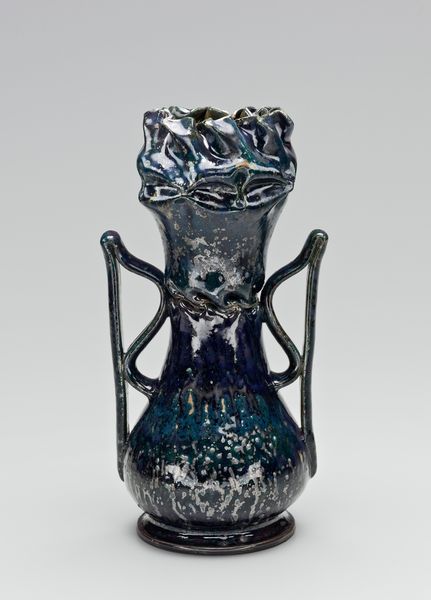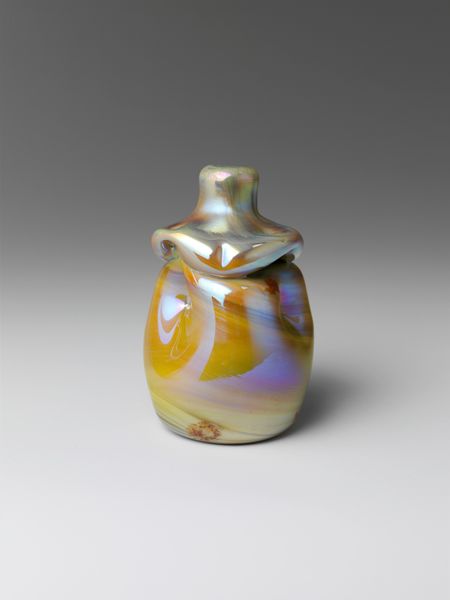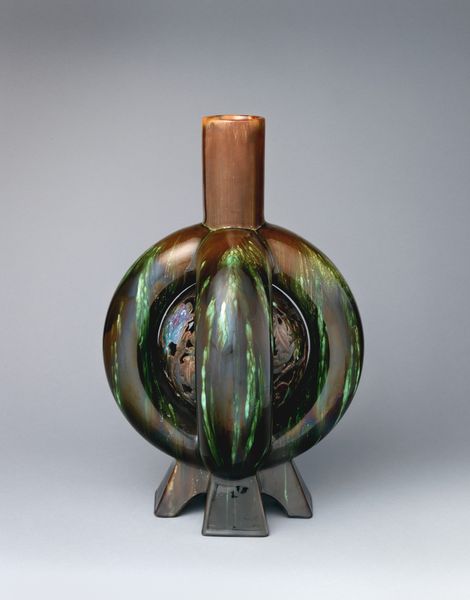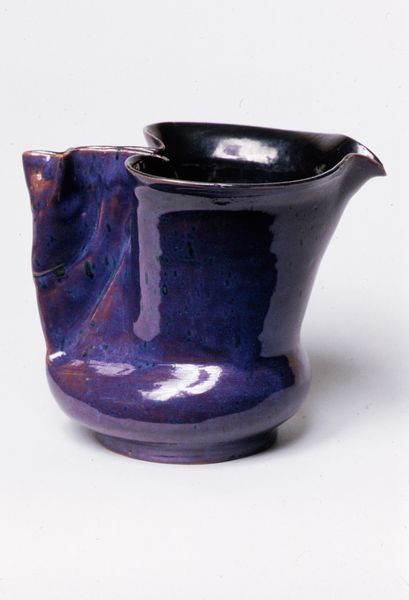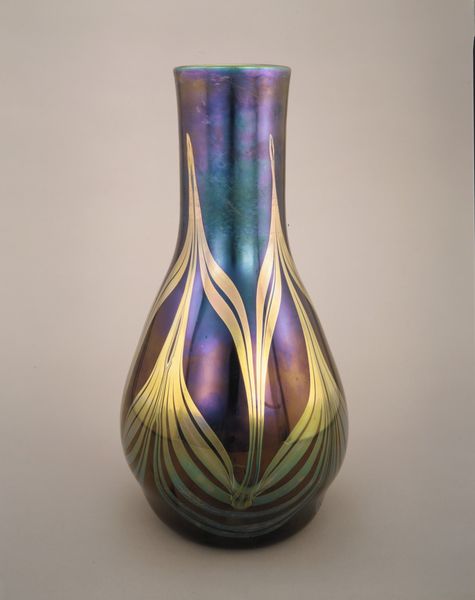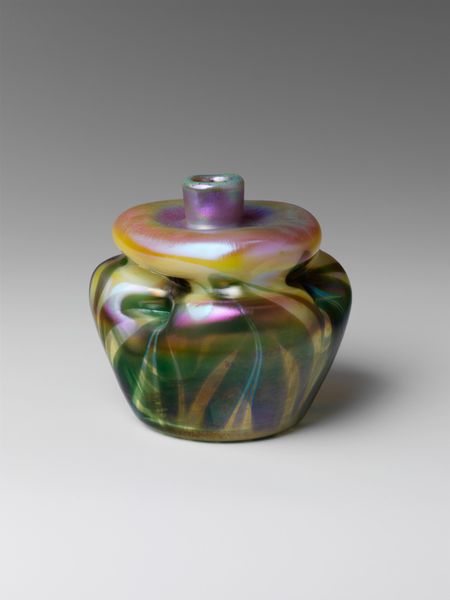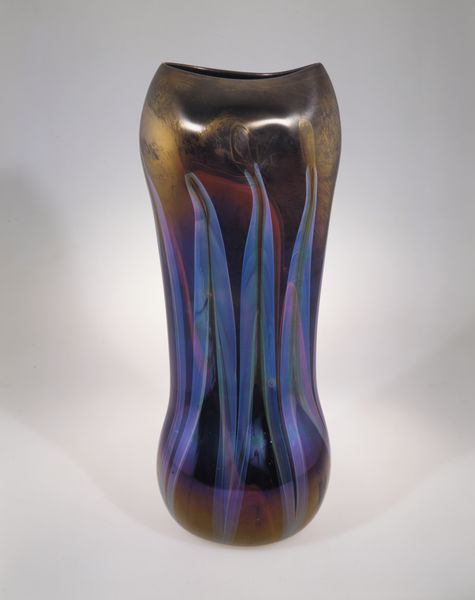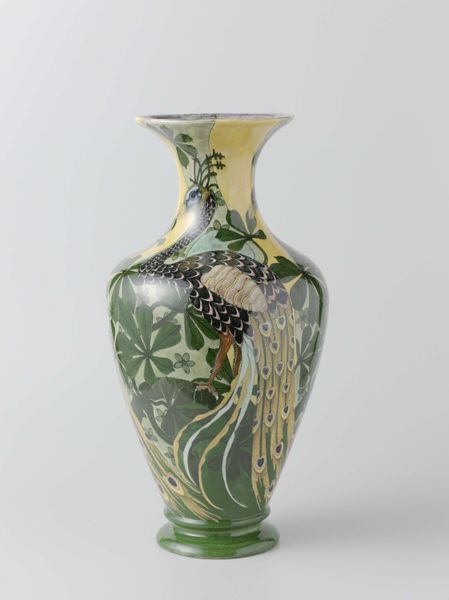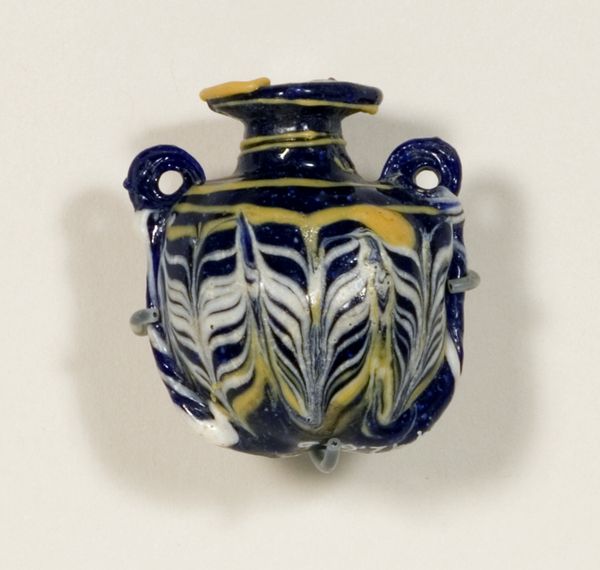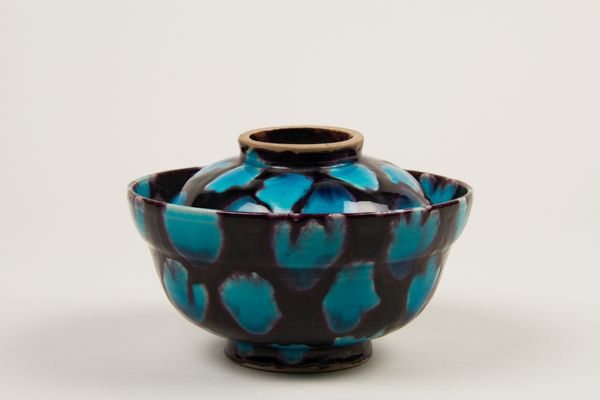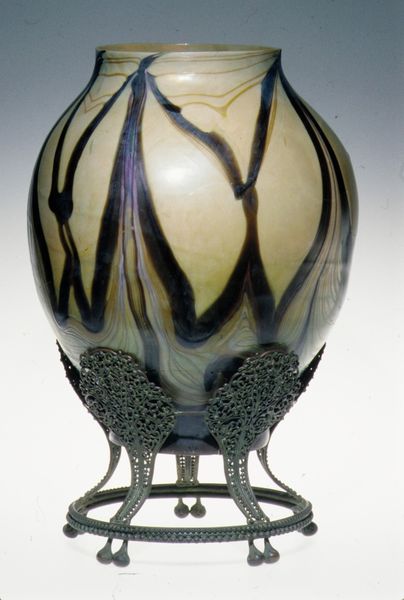
ceramic, sculpture
#
organic
#
art-nouveau
#
ceramic
#
form
#
sculpture
#
ceramic
Dimensions: 7 9/16 in. (19.2 cm)
Copyright: Public Domain
Editor: Here we have George Ohr's "Vase," a ceramic piece crafted sometime between 1894 and 1903. It's got such an unconventional shape, almost like fabric frozen in time. The deep purple glaze is really striking. What do you make of its seemingly unstable form? Curator: The "unstable" form is key. Ohr was working at a time of great industrial expansion and social upheaval. Traditional forms of craft were being challenged. Do you think Ohr’s embrace of asymmetry and almost violent manipulation of clay reflects that instability in the broader society? Editor: That's a really interesting perspective. I hadn't considered the social context so directly. The vase does seem to push back against the polished perfection often associated with ceramics, almost like a deliberate act of rebellion. Curator: Exactly. Ohr self-promoted as the "Mad Potter of Biloxi." This persona was carefully constructed, a way of differentiating himself in a crowded market. Consider the role of the artist, not just as a skilled craftsperson, but as a brand. The outrageous shapes and experimental glazes, did this reinforce or undermine the late 19th-century idea of a functional object? Editor: It definitely seems to undermine it. This is more of a statement piece, something to provoke a reaction. Seeing it as a commentary on industrialization and the artist's role makes it much more compelling. Curator: Precisely. By embracing the unconventional and even the "ugly," Ohr challenged the prevailing aesthetic values and offered a commentary on a changing world, prompting us to question what art could and should be. Editor: I'll never look at a vase the same way again! It’s amazing how much history can be embedded in a seemingly simple object.
Comments
No comments
Be the first to comment and join the conversation on the ultimate creative platform.
